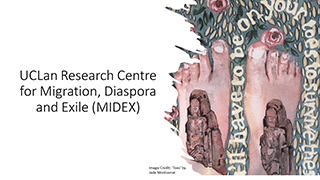Panspoudastiki
Panspoudastiki, Athens 31 May 1956 – April 1967, nos. 1-53. Official publishers-owners: Vasilis Mantelis (nos. 1-48), Maria Maroulakou (nos. 49-53). In reality, its publisher-owner was the Communist Party of Greece.
It was the most significant publication for higher education students in the postwar years. It stopped circulating shortly before the imposition of the dictatorship of the colonels, ending its journalistic life after 10 years and 11 months, having produced a total of 1,214 pages.
Three editorials marked the beginning of each of the magazine’s three publishing stages: the first – as was customary in the daily and periodical press – in issue 1, the second in issue 25 (December 1960) and the third in issue 49 (January 1965). The internal and external features of each stage are as different from the previous one as are the periods of time they cover. The first period after Panspoudastiki began to circulate in May of 1960 (nos. 1-24), is distinguished by students’ anxiety to determine their own fate in a society that did not yet recognize the rights of young people, and by the attitude toward students of a state that was attempting to reform higher education with police measures and violence. The 2ndperiod from December 1960 to May 1964 (nos. 25-48), is characterized by the unanimity of progressive students when facing the “wind of change” in the 1960s, with demands for democratization, participation and respect for academic, personal and civil rights. The third and final period, from January 1966 to April 1967 (nos. 49-53), after an interruption of 18 months, showed signs of the split in the democratic student movement, caused by the compromises, shilly-shallying and backsliding of the political Centre that was currently in government, as well as the split in the ranks of the student Left; it likewise bears the signs of the fascism that was at the gates.
The second period of Panspoudastiki, i.e. from issues 2o 48, and particularly issues 32 (Nov. ’61) to 48, the freshest and most saleable, was characterized by its rich content, its many topics, high aesthetics, combination of political culture and intelligence, and by the wind of renewal blowing in the 1960s.
The publication of Panspoudastiki inevitably followed the burgeoning publishing output of the Left political party EDA, which began in August 1951, with its founding declaration, and culminated gradually between June 1956 – its First Conference – and April 1967, when the dictatorship was imposed. Just before this period began (Dec. 1954-Jan. 1955) the magazineEpitheorisi Technis (Art Review) had made its appearance. These two publications signaled the end of the post-civil-war era and marked the periodical press in our country.
A genuine product of its time, Panspoudastiki was the young people’s magazine that most officially marked the onset of the famous “rise of youth” in Greece, a mass global phenomenon of the early ‘60s. Its publication was the product of the more general climate that encouraged young people to come out of their shell, and more specifically, it encouraged students to emerge from their post-civil-war solitude. It was a publishing event that contributed ideas and proposals to the effort to reorganize education, which had become a high priority issue both in Greece and throughout the world. Its circulation here was instrumental in providing information to higher education students, particularly after the limited reorganization of education by the Education Commission that was set up on 14 July 1957.
Panspoudastiki kept students and public opinion informed on issues related to education and especially to higher education; it activated and mobilized students and helped them gradually to develop student unions, a political, potentially mature institution whose decisions at its top moment – at its 4th Conference in 1964 – offered the country a charter for education. It was a collective effort by Left- wing students that paved the way for the multiple and polyphonic student press.
Its pages covered not only the gap in students’ information on problems of education, and in particular higher education in all its dimensions; they also covered the lack of information about politics, educational policy, trade unionism, science, arts and letters, as well as Greek, European and world culture, and contributed to their readers’ understanding of the work by the intellectual Left of the era. But above all, it shed light on immediate, pressing issues, major and minor, of concern to students, their studies and their daily life. Its pages likewise became a medium for developing “student journalism”, as they themselves described their efforts, because they were addressing a specific readership of young people in higher education, while providing the students with a forum, which they did not have then in the daily or periodical press.Panspoudastiki offered them opportunities to learn, help, cooperate, test their abilities, and realize their potential. It promoted the maturation process among militant young men and women with political ethics and syndicalist virtues who – even though they carried a heavy legacy from the civil war with experience of the repressive machinery of the police state that followed, as well as the disputes and splits in the Left – succeeded in placing their seal on the educational-cultural revolution of the ‘60s. Its nationwide impact and international recognition conduced gradually to changing the student movement from being Athens-centred to nationwide, from a student movement to one that expressed the entire nation, from provincial to cosmopolitan, and from national to international, while also helping to relax the apprehensive and introverted climate of Greek political life. Its pages take on special interest if one considers that many of its contributors, then young, are today active members of the country’s political, social and intellectual life.
Kaiti Topali
Έντυπο:
Θεματική Κατηγορία:






